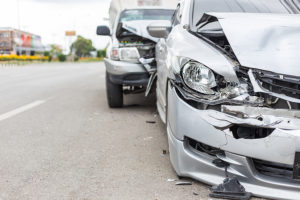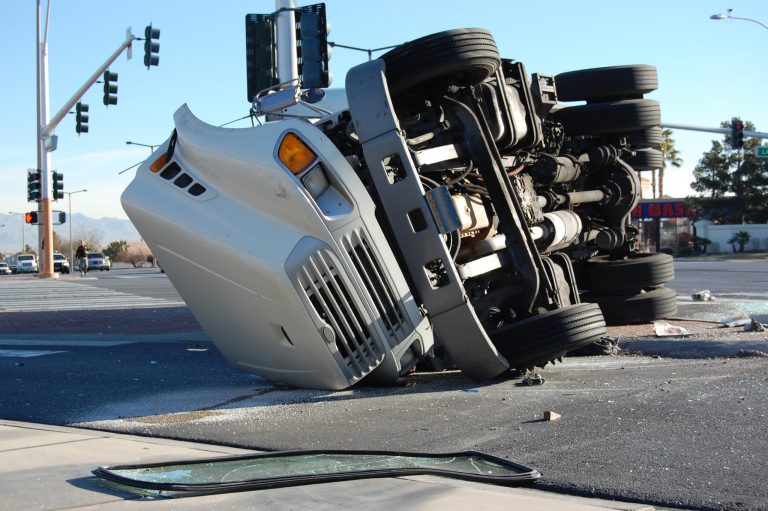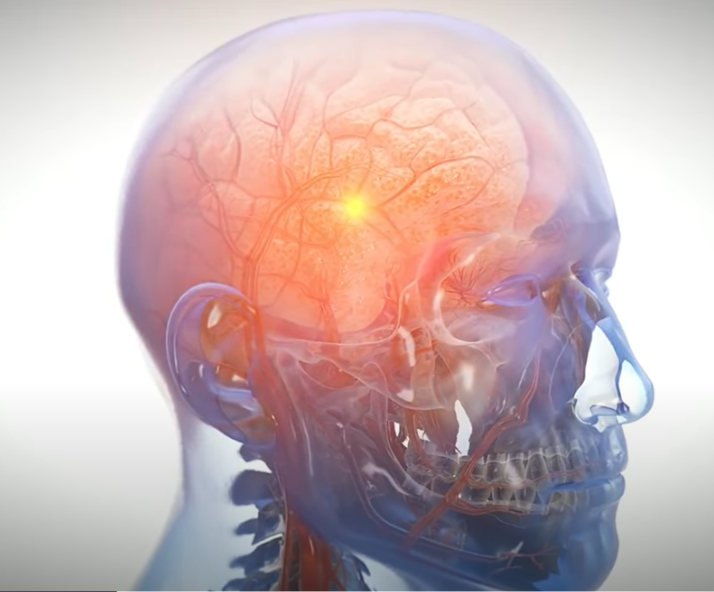 When you get into a car accident, your first worry may be your injuries. Once you start to recover, or after you are well enough to be released from the hospital, you begin to realize the fallout of the accident in lost wages, medical expenses, and other life-changing impacts. It is often easy to determine who pays for your damages when only one other vehicle was involved in the wreck, but what happens when three vehicles, including yours, were in the wreck? Who is at fault? Who pays your damages?
When you get into a car accident, your first worry may be your injuries. Once you start to recover, or after you are well enough to be released from the hospital, you begin to realize the fallout of the accident in lost wages, medical expenses, and other life-changing impacts. It is often easy to determine who pays for your damages when only one other vehicle was involved in the wreck, but what happens when three vehicles, including yours, were in the wreck? Who is at fault? Who pays your damages?
Determining Fault in a Multi-Vehicle Wreck
You might automatically assume that the person who collided with you is liable for your damages. However, that is not always the case. For instance, the vehicle that collided with them may have only done so because a third vehicle collided with them. In such a case, you could recover damages from the third driver, or perhaps from both drivers, depending on the circumstances. Below are three examples where liability could be more complicated than pinning it on the vehicle that collides with yours.
Example 1: Intersections and Three-Car Wrecks
Your light is green, so you look both ways. You see that all vehicles have come to a complete stop, so you proceed through the intersection. All of a sudden, someone T-bones you on the driver’s side and shoves your vehicle across the road into another vehicle. The driver who T-boned you had been looking down at their cell phone.
Because they took their eyes off the road, they didn’t notice the red light or you entering the intersection. The driver of the vehicle you were launched into sustained serious injuries. While your car hit them, it was by no fault of your own, and the driver who T-boned you should be responsible for compensating you and the third driver for your injuries.
Example 2: Aggressive Driving and Three-Car Collisions
You are driving down the highway on your way to work. An aggressive driver is tailgating you and decides to pass you. The driver passes close by your side because he’s mad that you were driving the exact speed limit, and he thinks you should speed up because he is late. He merges in front of you but does not look into his rearview mirror and clips your bumper, causing you to spin out.
In the process of spinning, your rear bumper slams into the driver’s side door of the vehicle in the lane next to you. In this case, again, another vehicle caused you to wreck and hit the third vehicle—it is the aggressive driver who hit you who should be liable for your damages, as well as the damages of the person he forced you to hit.
Example 3: Rear-End Wrecks and Head-On Collisions
Some rear-end wrecks and head-on collisions involve two vehicles: the person who ran into you from behind or hit you head-on. In other cases, a third vehicle is involved in the wreck. If a rear-end or head-on wreck pushes you into the vehicle in front of or behind you, the person who hit you should be liable for your damages and for the damages of the driver whose car you hit.
Sometimes, two or three drivers may share liability. For instance, if you and a driver are in contest with each other, both driving aggressively, you could bear liability for the damage caused to a third vehicle, even if another driver was the primary cause of the accident.
For example, Vehicle #1 is tailgating you—Vehicle #2. You get mad and slow down and then speed up. You repeat this behavior because every time you speed up, Vehicle #1 tailgates you.
However, you do not notice traffic slowing down in front of you because of a wreck farther up the road. You speed up, and barely notice that you are about to hit the vehicle in front of you, Vehicle #3, and slam on your brakes. Vehicle #1 tailgated you, did not have the space to stop in time, and not only rear-ended you but also rammed you into Vehicle #3.
In this case, you are probably at least partly liable for the damages to Vehicle #3. If you can prove that Vehicle #1 was negligent, in this case because he was tailgating you as you sped up, Vehicle #1 could share in the liability for damages.
If you drive every day, you’re bound to see these types of wrecks at some point, where liability is not black-and-white. Hopefully, you won’t be involved in the wreck, but if you are, a car accident lawyer can help you sort out who is liable. Even if you believe you are partly at fault, you should speak with a car accident attorney. You might find out that another driver can be held partly liable to a car you hit, or at least liable to you for your damages.
Insurance Companies and Accidents
After an accident, it is normal to notify an insurance company of the accident and initiate a claim. While you should notify an insurance company of basic details about the accident—such as the date and time, and drivers involved and their contact information—you should let your attorney talk about the accident with the insurance company, especially if you were in a three-car accident.
Insurance companies, including your own, are in business to make money. Your loyalty or that you’ve paid thousands in premiums will not stop your own insurance company from finding any way to deny or minimize your claim.
Paying claims decreases their profit margins. This means that an insurance company will do anything to deny your claim, or at the very least, make you an offer that won’t cover your medical expenses, never mind other expenses and damages you incur.
An insurance company might achieve its end by simply getting you to describe the accident. They can then twist what you say to blame you so that they do not have to pay the claim or pay out much less than you deserve.
Car accident lawyers know insurance company tactics and can avoid saying anything about the accident that could jeopardize your claim. Additionally, when an attorney calls on your behalf, the insurance company is more likely to be fair and reasonable in settlement talks.
When you come to the table with an attorney, the insurance companies know that you have someone with expertise on your side and that you are more likely to litigate if they do not offer a fair and reasonable settlement.
Litigation typically costs insurance companies a lot more in legal fees and other costs than they pay if they would just offer a fair and reasonable settlement. Not only do they have to pay their attorneys to litigate, but in some cases, they have to pay your attorney fees, on top of whatever damages a court awards. This can become especially expensive in a three-car accident case.
When More Than One Person is Liable for Your Damages
When more than one person is at fault for an accident that caused you injuries, you could collect damages from all responsible parties. For example, if two drivers are racing and they crash into you, both could share responsibility for your injuries. If you suffer catastrophic injuries, and a sole driver’s insurance is not enough to cover your damages, you could recover damages from the other driver’s insurance policy. Thus, in some cases, when you have two or more defendants, you have a better chance of collecting the full compensation you need to cover all your expenses and impacts.
Recovering Damages After a Multi-Vehicle Accident
When you get into an accident with one other vehicle, unless it is a commercial vehicle, you can typically easily determine who has to pay as long as you are not at fault—the other driver. When you get into a wreck with a commercial vehicle or more than one driver, it becomes more difficult to determine who is liable for your injuries. Car accident lawyers use their experience, investigations, and resources to determine who is responsible for paying for your damages.
In some cases, one defendant might be more responsible than another for your damages. A good car accident lawyer can use the tools at their disposal to find all potentially liable parties and pursue the full compensation you deserve from all defendants who share in the responsibility for the accident.
Compensatory Damages
A court orders the defendant to pay compensatory damages to make you whole again. While money does not heal your injuries, nor take away any of the significant life impacts a car accident often does, it significantly reduces financial stress—something you do not deserve when trying to recover from your car accident injuries and move on with life as best you can.
Economic Damages
Economic damages, also called special damages, have a monetary value and may include:
Medical Expenses. You can recover past and anticipated future medical expenses. Both are for expenses you incur because of the accident. While past expenses include those incurred before a settlement or trial award, future expenses include those you expect to incur after a settlement or a trial award due to ongoing treatments, prescriptions, and other medical care to continue to address your accident injuries.
Medical expenses include surgeries, follow-up appointments with your primary care provider, appointments with specialists, physical therapy, occupational therapy, and cognitive and other psychological therapies. Medical expenses after a car accident may also include ambulatory aids, prescriptions, updates to your home to make it handicap accessible, and hand controls for your vehicle.
Personal Property. Economic damages also pay for damage to your vehicle. If the insurance company flags your vehicle as totaled, in most cases, it will pay out the value of your vehicle at the time of the wreck. You can also recover compensation for personal property inside your damaged or destroyed vehicle.
Lost Wages. You can recover your lost wages from the time of the accident until you settle or receive a trial award, as long as the injuries you sustained in the accident keep you out of work.
Additionally, you could recover for future lost wages and lost earning capacity, if doctors believe that your injuries will cause long-term or permanent disabilities that will require you to miss more work or prevent you from working as you did before the wreck.
If you can return to work, but your injuries and/or disabilities prevent you from making the same salary or hourly rate, you could collect partial lost wages to make up for the diminished earning capacity.
End-of-Life Expenses. In the event you lose someone in a car accident, you can bring a wrongful death action. Economic damages in such a case could cover your loved one’s end-of-life expenses, such as funeral costs, burial expenses, and cremation costs. They could also cover the expense of filing a probate case if your loved one died intestate or testate.
Non-Economic Damages
General damages, usually referred to as non-economic damages, do not have an objective monetary value.
Non-economic damages may include:
- Pain and suffering, including emotional distress
- Loss of quality of life, if the accident caused extensive life impacts, such as having to take prescriptions with harsh side-effects or use ambulatory aids for the rest of your life
- Loss of companionship, if you can no longer take part in or enjoy family activities and events
- Loss of consortium, if you can no longer have a physical relationship with your spouse or partner
- Loss of use of a body part, such as your foot or hand
- Loss of use of a bodily function, such as your bladder or your eyesight
- Amputation of a digit or limb
- Excessive scarring and/or disfigurement
- Inconvenience, if you have to hire someone to take care of the chores you would normally do, such as house cleaning, lawn maintenance, grocery shopping, and home repair and maintenance
Punitive Damages
A court only orders punitive damages if you can show that the defendant committed grossly negligent or intentional actions or inactions. Instead of making you whole again, a court orders the defendant to pay punitive damages to deter them and others in society from engaging in the behavior that caused the accident.
When you request punitive damages, the court bifurcates the trial—it divides it into two parts. Since you can only recover punitive damages if you receive compensatory damages, the court cannot hear the punitive damage claim until after the initial claim.







